- News
- Reviews
- Bikes
- Accessories
- Accessories - misc
- Computer mounts
- Bags
- Bar ends
- Bike bags & cases
- Bottle cages
- Bottles
- Cameras
- Car racks
- Child seats
- Computers
- Glasses
- GPS units
- Helmets
- Lights - front
- Lights - rear
- Lights - sets
- Locks
- Mirrors
- Mudguards
- Racks
- Pumps & CO2 inflators
- Puncture kits
- Reflectives
- Smart watches
- Stands and racks
- Trailers
- Clothing
- Components
- Bar tape & grips
- Bottom brackets
- Brake & gear cables
- Brake & STI levers
- Brake pads & spares
- Brakes
- Cassettes & freewheels
- Chains
- Chainsets & chainrings
- Derailleurs - front
- Derailleurs - rear
- Forks
- Gear levers & shifters
- Groupsets
- Handlebars & extensions
- Headsets
- Hubs
- Inner tubes
- Pedals
- Quick releases & skewers
- Saddles
- Seatposts
- Stems
- Wheels
- Tyres
- Health, fitness and nutrition
- Tools and workshop
- Miscellaneous
- Buyers Guides
- Features
- Forum
- Recommends
- Podcast
TECH NEWS
Tour Tech 2017: The handlebars the pros are riding, including Froome, Kittel, Bardet and more
Handlebars, they come in many varieties of shape, reach and bend, and which a rider chooses comes down to personal preference. It also depends on the choice the team equipment sponsor offers them, but most handlebar brands these days offer a wide selection for them to choose from.
Here’s a look at the different handlebars being used in the Tour de France by the top racers, including Chris Froome, Marcel Kittel, Romain Bardet and more.
A couple of FDJ riders, including stage four winner Arnaud Démare, were using a new PRO Vibe Aero handlebar. PRO is the component offshoot of Shimano and produces handlebars for a number of teams. It’s more recently added this aero option to its range, which will obviously appeal to sprinters. Aero shaped tops with internally routed cables should reduce drag.
Chris Froome has switched to a PRO integrated aero handlebar for the Tour de France this year, presumably opting for a bit of extra aero on his Pinarello Dogma F10.
We’ve seen in previous years that Froome likes to run optional Di2 satellite shifters at the centre of the bars, and he likes to shed a few grammes with the outer plastic case removed. Probably don’t try this at home!
Team Sky teammate Geraint Thomas meanwhile opts for a more regular setup. A carbon fibre PRO handlebar with an anatomic bend and tape wrapped to nearly the stem, just enough space left to show the logos and fit a Garmin mount.
Specialized developed its own aero handlebar for the Venge Vias, complete with matching stem. Very flat tops aim to reduce drag and cables are internally routed, in this example going right through the stem and directly into the frame for extra aero points. There’s no way to mount a computer to the handlebar, so there’s a mount fitted to the stem faceplate.
Dan Martin’s Quick-Step Floors team is sponsored by FSA, and the Irishman uses an aluminium Ergo handlebar with a classic round shape, wrapped in Supacaz tape.
There’s an Enve SES Aero handlebar somewhere under that ugly bar tape on this Dimension-Data race bike. The handlebar was developed in the wind tunnel and has a curved compact bend shape.
Here’s the same Enve SES Aero handlebar as seen on Mark Cavendish’s race bike, and with the tape only wrapping the drops you can better see the profile of the top section. Wide flat wing-shaped with a regular round clamping section so it fits a normal stem.
Marcel Kittel is also maximising his aerodynamics by choosing the new Vision Metron handlebar. One-piece integrated handlebar/stems like this are in fashion at the moment, and this one is clearly built for stiffness with the oversized stem.
The Fortuneo-Oscaro team is sponsored by Look and the French bike brand also supplies this, its ADH aero road handlebar. High-modulus carbon fibre with compact drops and internal routing for gear cables or wires. The bar fits a regular 31.8mm handlebar and there’s just space to fit a Garmin out-front mount.
Greg Van Avermaet’s BMC team is sponsored by 3T and he’s sticking with his favoured Rotundo, which has a traditional round drop bend, with a single wrap of bar tape. It’s a carbon handlebar, we often see racers opting for aluminium because they stand up better in crashes and add a big of often much-needed weight on bikes that skirt close to the UCI’s 6.8kg weight limit.
The oddest handlebar design in the Tour de France this year has to be the distinctive Specialized Aerofly, which comes in this optional 25mm rise version. It was developed for the Venge ViAS but it’s seen here attached to the new Specialized Tarmac. Why the shape? It’s so a rider can get their preferred fit whilst still maintaining optimal aerodynamics.
Thibot Pinot’s FDJ team gets full backing from Shimano’s PRO brand and the Frenchman opts for a Vibe aluminium handlebar and stem setup, a pretty unremarkable setup, and quite popular throughout the peloton.
The handlebar has a compact bend shape.
Romain Bardet’s Ag2r La Mondiale uses a brand we’re not familiar with for its handlebar and stems, Black Inc.
Rather oddly, Bardet opts for a compact bend shaped handlebar but rotated forward in the stem, and the brake levers positioned much further back. We have no explanation for this setup, we can only presume he likes the position the strange setup provides.
Many of the Astana Argon 18 team bikes were specced with FSA compact drop handlebars. The Italian component company pioneered the compact handlebar, it has a shorter reach by way of extended drops, and a reduced drop, so it’s less of a stretch.
An observation about handlebars is how they are often used to mount computers and extra shift buttons. This Bora-Hansgrohe team bike has optional Di2 satellite shifter buttons and a K-Edge out-front mount.
The Shimano Di2 groupset also provides the option for sprint shifter buttons to be installed inside the drops. This allows a rider to change gear without moving their hands from the drops or having to stretch a finger for the gear button on the brake lever, you can simply lean on it with your thumb.
So you've seen what the pros favour, but what handlebar shape and type do you prefer?
David worked on the road.cc tech team from 2012-2020. Previously he was editor of Bikemagic.com and before that staff writer at RCUK. He's a seasoned cyclist of all disciplines, from road to mountain biking, touring to cyclo-cross, he only wishes he had time to ride them all. He's mildly competitive, though he'll never admit it, and is a frequent road racer but is too lazy to do really well. He currently resides in the Cotswolds, and you can now find him over on his own YouTube channel David Arthur - Just Ride Bikes.
Latest Comments
- cyclisto 6 min 27 sec ago
The truth is than in the Netherlands that I saw them, they were indeed a bit huge for cycle infra. However they were rather rare.
- Secret_squirrel 36 min 48 sec ago
Those calipers arent the prettiest. Makes them look like Post-mount.
- Losd 1 hour 8 min ago
Yep: "Are REVOLOOP bicycle tubes suitable for rim brakes?...
- Dnnnnnn 1 hour 19 min ago
I'm all for a much more socialist approach to the sorts of things you mention, where there are clear market failures and a need for decent...
- David9694 1 hour 20 min ago
Zorbing balls - if it saves just one life
- 11waterloo 1 hour 26 min ago
12 corners in just over 2km is a terrifying prospect if it rains!
- chrisonabike 1 hour 53 min ago
I think it's:...
- NeilBedwin 2 hours 12 min ago
As it's often said -'the way to justify the building of a bridge is not too count the number of people swimming the crocodile infested river!'
- OldRidgeback 2 hours 21 min ago
I used to go that way to work. It's nasty and congested. I doubt any changes will make the congestion worse.






































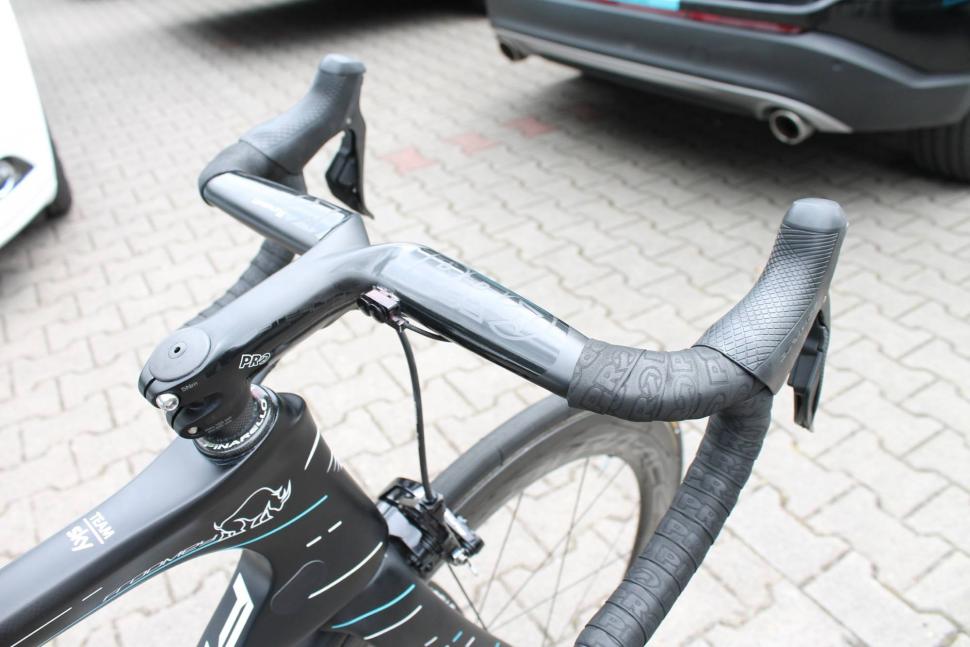


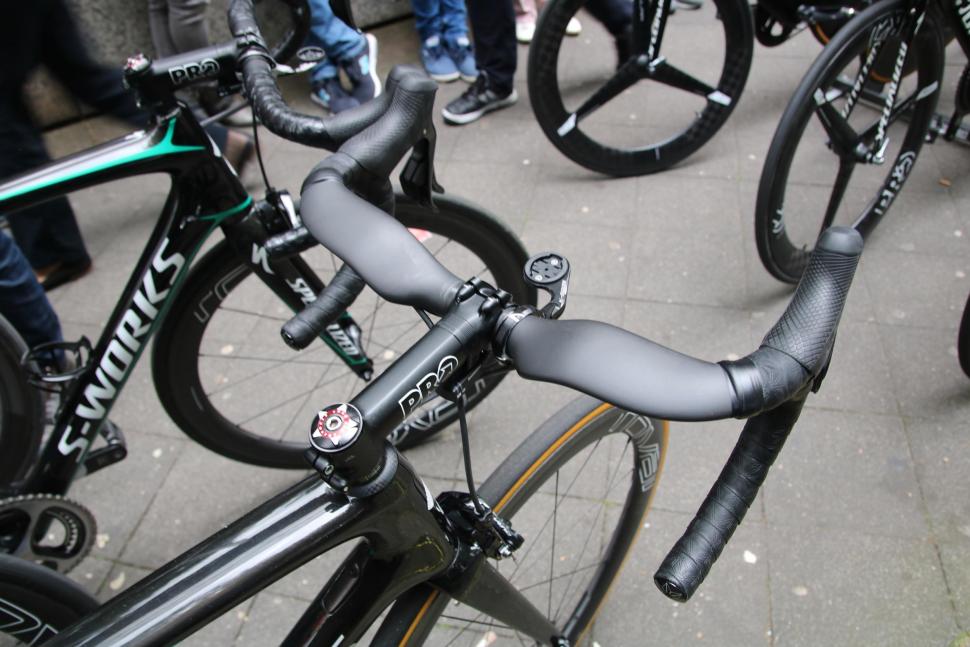






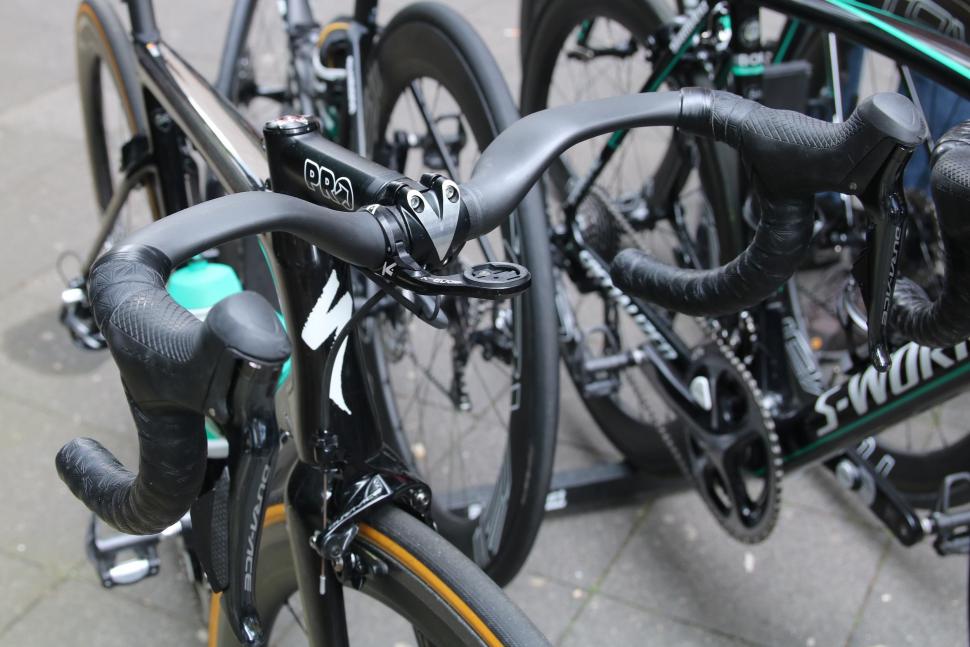
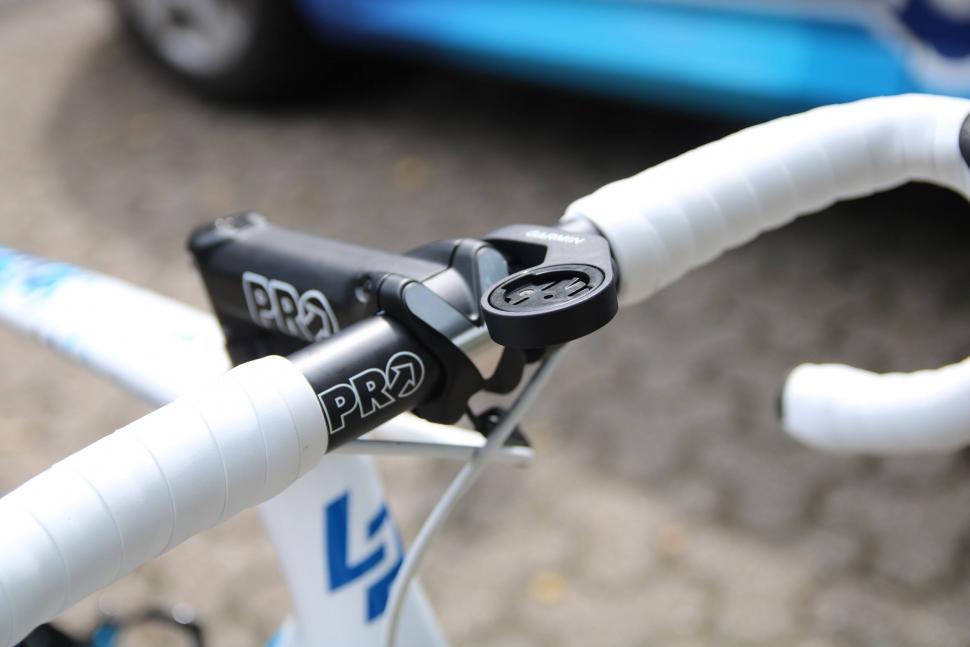
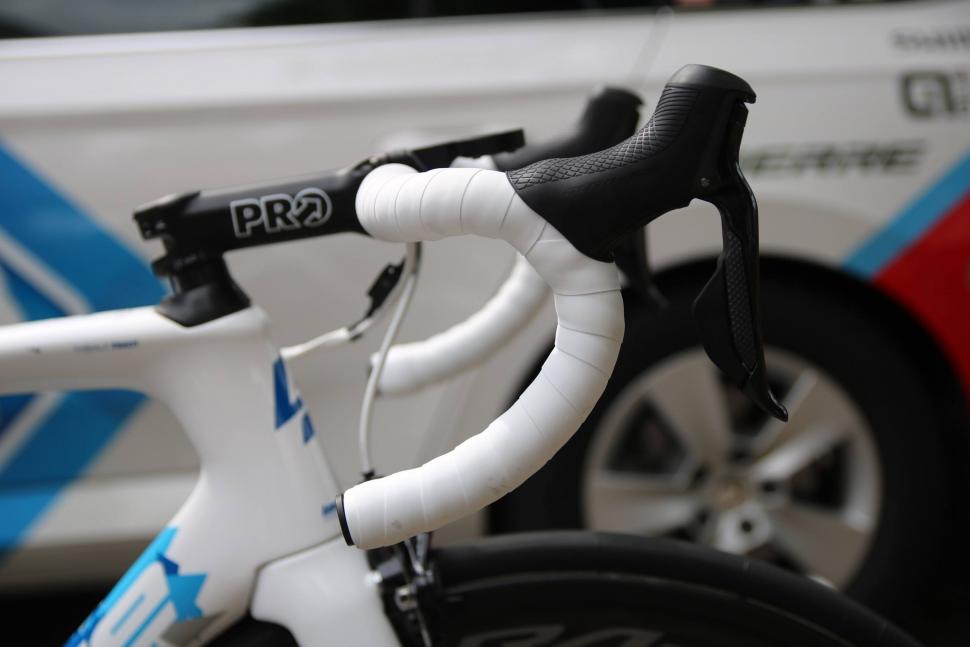





Add new comment
8 comments
Some very interesting looking Garmin mounts with no explanation.
Stems are long because a lot of the pros ride with saddles far further forward than us average Joe's
This is facilitating a greater rotation of the pelvis in order to sustain a more aero position.
Also, turned up shifters, whilst initially more comfy in the hand, have a habit of causing neck / shoulder pain.
Their position encourages you to slump your arms into the hoods, which in turn sends road forces straight up your arm into your shoulders and neck.
Rotating the shifters so they are flatter, encourages you to support your weight in a less locked up way, meaning that your arms can work as a far more effective shock absorber.
Or something... innit?
Is Bardet's setup maybe to extend the end of the drops back a bit? some of the compac bars have quite a long section at the end of the bar whereas his doesn't seem to so much, twisting it round extends it backwards a little, and if he doesn't need too much space on the tops he's not losing much. Or he might just like a weird setup, what do I know?
The angle of the hoods also seems to be much flatter? More aero?
Agreed. For quite a while the brake levers looked like a set of cow horns on the front, but now they've come back to a flatter style more a la 80's and 90's. I've always kept mine quite low because I'm a bit of a Luddite, and also it means it's easy to ride with flat fore-arms and stay reasonably aero.
compact for all.
they are actually more agressive in fitting. Set up the drops as low as you can reach-manage. Then due to the small drop, the hoods will be closer to the drops.
So you'll spend most of your time lower-more aero than with traditional larger drop models...
Well I am far from a racer and given that my bicycle is a straight bars to drop bars conversion, I use a shorty 70mm stem to compensate for the long TT length that my originally straight bars bicycle had. It is nervous due to the short stem, pleasantly when on hoods and urban traffic, unpleasantly when on drops and high speeds. I use compact bars but not very often on drops.
All of those stems seem quite long!